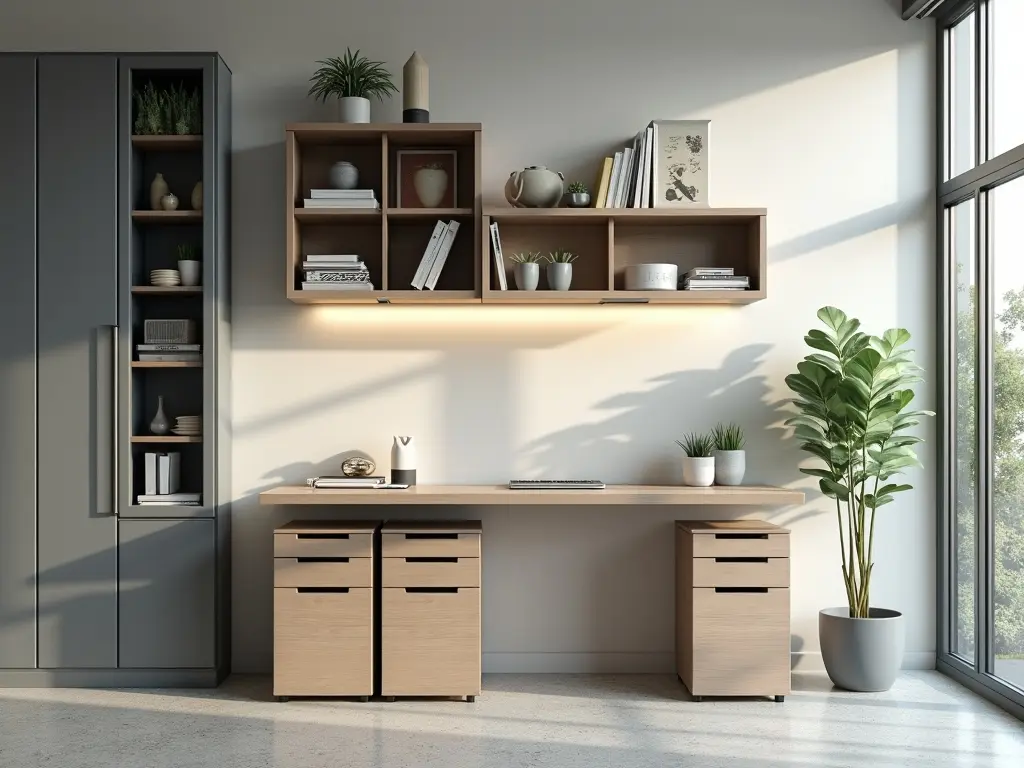Ever walked into a cluttered workspace and instantly felt your productivity drop? It’s not just in your head. Disorganization leads to wasted time, misplaced tools, and unnecessary stress. Whether you’re managing a warehouse, a factory floor, or even a backroom, the way you store your materials directly impacts efficiency.
A streamlined workspace isn’t about just keeping things “tidy.” It’s about creating a system where materials, tools, and products are stored in a way that supports your workflow. That’s where smart storage solutions come into play.
Below, we’ll run through practical options that aren’t just about putting stuff in boxes. These are proven strategies employed across various industries to enhance productivity, improve safety, and maximize the utilization of every square foot.
1. Stackable Plastic Containers – The Workhorse of Efficient Storage
If there’s one solution that offers versatility, durability, and serious space-saving power, it’s stackable plastic containers. These aren’t your average storage bins. Designed to withstand heavy use and rough environments, they’re built for real workspaces.
- Space efficiency – These containers stack vertically, which means you can store more in less space. That’s especially useful in tight environments where floor space is limited.
- Improved organization – Sort parts, tools, or inventory by size, type, or use-case. Clear labeling or color-coding makes retrieval quicker.
- Durability – High-quality plastic holds up against moisture, chemicals, and general wear and tear. No denting or rusting like you’d see with metal or cardboard.
- Easy handling – Many containers are designed with ergonomic grips or forklift access, which simplifies transport.
- Compatibility with pallets – You can stack these directly on custom pallets, optimizing both vertical and horizontal storage in transit or on shelves.
They’re ideal for storing anything from raw materials and small parts to finished goods ready for shipment. And since they can be reused for years, they’re also a more sustainable choice in the long run.
2. Custom Pallets for Materials That Don’t Fit the Mold
Not everything fits neatly into a standard box or bin. That’s where custom pallets come in. If you’re handling unusually shaped parts, oversized items, or delicate materials, you need a base that fits perfectly—literally.
Off-the-shelf pallets may seem like the easier option, but they often result in wasted space, instability, or even damage during transportation. A well-designed custom pallet supports your product exactly where it needs to be, reduces shifting and breakage, and maximizes space on shelving or in trucks.
And here’s another benefit: custom pallets can be designed to integrate with your specific storage system. Whether it’s stacking, racking, or automated handling, these pallets can be made to suit your needs, not the other way around.
3. Bulk Containers for High-Volume Materials
When you’re moving or storing large quantities of material, bulk containers are a game-changer. These rugged containers are perfect for heavy-duty applications and high-volume storage. Think large-scale manufacturing, agriculture, or distribution centers.
They’re typically made from industrial-grade plastic, which makes them resistant to damage from chemicals, moisture, and heavy loads. Some are even collapsible, which saves space when they’re not in use. Others are designed with drop-down panels for easy access to contents, even when stacked.
Key benefits include:
- Reduced handling time
- Lower risk of product damage
- Better utilization of space during storage and transport
If your operation handles large volumes of materials, from metal parts to food-grade products, bulk containers can save both time and money in the long term.
4. Modular Shelving Systems That Grow With You
Modular shelving is all about flexibility. When your inventory changes or your workflow evolves, you need a storage system that can adapt to these changes. Modular units enable you to quickly reconfigure your setup without having to start from scratch.
Some systems come with adjustable shelves, removable bins, or stackable components that can be tailored to your specific needs. That means your workspace evolves with your business, not against it.
It’s especially useful in environments where frequent change is expected, such as R&D labs, repair centers, or fast-paced warehouse zones.
And don’t underestimate the power of visual order. A clean, organized shelving unit helps team members find what they need quickly, reduces errors, and improves morale.
5. Pallet Racking for Maximized Vertical Space
Got height? Use it. Pallet racking systems are one of the most effective ways to make full use of vertical space in a warehouse or storage facility. Instead of spreading out, you build up.
This approach is ideal for storing heavy materials on pallets, keeping bulk goods accessible by forklift, and creating clear zones for different product types or production stages.
It also helps you maintain better inventory control, since everything has a designated space. No more hunting through piles or shifting materials around to find what you need.
Pallet racks can be tailored to your inventory’s size, weight, and handling requirements, making them a scalable and long-lasting solution.
Give Your Space a Purpose
Smart storage isn’t just about where things go. It’s about how they support your process. Every shelf, bin, or pallet should have a specific purpose, helping your team move materials more easily, store them more safely, and access them more quickly.
So, whether you’re revamping a warehouse or fine-tuning a single workstation, take a step back and ask: Is your storage system working for you? Or are you constantly working around it?
When storage is designed with intention, the whole workspace becomes more efficient. And that efficiency is evident in every task, every shift, and every shipment.





Leave a Reply
You must be logged in to post a comment.